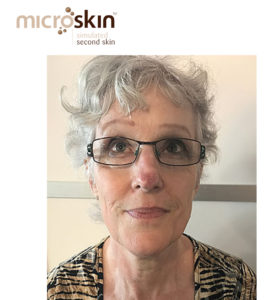
What is Vitiligo?
Vitiligo is a medical condition that affects the skin of almost two percent of the world’s population. Patches of the skin of a person who is suffering from Vitiligo gets discolored. It is a long term problem and can affect individuals irrespective of their gender, age, and the ethnic group they belong to. Apart from the patient’s skin, Vitiligo might also discolor the patient’s hair, inside portion of the mouth, and the eyes.
Cells called Melanocytes are responsible for the production of the skin pigment known as melanin. Melanin gives human skin its color and also protects it from the harmful Ultraviolet rays of the sun. The patches in the skin of a patient suffering from Vitiligo arise when the melanocytes of those affected portions of the skin die, and hence melanin production gets disrupted.
Though the exact cause of the disease is unknown to date, it can be due to a virus or an auto-immune disorder. Also, it cannot be predicted whether already existing patches will spread further or not, and if they spread, then by how much will they spread.
Vitiligo is a non-contagious disease.
What are the symptoms of Vitiligo?
Vitiligo has just one symptom, and that is the appearance of flat, pale spots on the skin. The initial patches often arise in the areas that are most exposed to the sun.
When these spots first appear, they are just a little paler than the rest of the skin and look harmless. But gradually they spread and turn paler until it becomes almost white.
The patches that arise on the skin due to Vitiligo do not cause any form of discomfort. They do not cause irritation, pain, soreness, or dryness.
What are the treatments available for Vitiligo?
In recent times, advances in medical sciences and technology have complemented each other to discover treatments for Vitiligo. Given below are a few of the most common treatments for the medical condition.
Tattooing
Vitiligo and tattoo cover-up makeup has been in popular culture for some time now, thanks to the media coverage that the topic got when Michael Jackson shared the story of his struggles to combat Vitiligo.
In tattooing, pigments are implanted into the skin via means of surgery. Tattooing has its drawbacks as well. Matching the skin color of the patient is the initial challenge. If during tattooing, any portion of the skin is damaged, then it might trigger another patch of Vitiligo. Hence, the process requires the utmost attention, care, and expertise.
Skin Camouflage
In cases of mild Vitiligo, the patient may opt to apply a cream to cover scars as well as to match the color of the affected patch to the natural color of his/her skin. Cosmetic creams and makeups are readily available in the markets today and can help in disguising the color of the patches.
If the cream to cover scars is appropriately applied, and waterproof ones are applied, then the cover can last up to twelve to eighteen hours.
Use of Sunscreen
Using a suitable cream to cover scars as well as to serve as an extra protective layer to protect the patches from sunlight is a good idea.
Phototherapy with UVA and UVB light
With the advancement in medical sciences, phototherapy is becoming an increasingly common way to treat Vitiligo. In photo treatments, the patient is made to ingest a drug that increases the sensitivity of the skin to light, and then the affected portions are exposed to the desired type of light (UVA or UVB).
Why is it essential to treat Vitiligo?
The patients who suffer from Vitiligo not only have to deal with a few medical complications, they also have to face steep social stigma. That is why cream to cover scars that arise due to Vitiligo has proved to be the magic wand for Vitiligo patients. That is also the reason why, nowadays, Vitiligo and Tattoo cover up makeup are uttered in the same breath.
Though Vitiligo scars are painless and the condition does not develop into other diseases, there are a few complications that arise in patients who suffer from Vitiligo. The skin of a patient who has Vitiligo is vulnerable to severe sunburns as it lacks melanin, which protects the skin. Therefore, it becomes essential to use a cream to cover scars as it serves as a protective covering on the patches.
Vitiligo patients, when left untreated for a long time, may experience hearing loss and changes in vision and tear production. Hence, from a physical point of view, it is of utmost importance to treat Vitiligo.
Vitiligo is a painless, non-pruritic disease. Yet, the negative impact that it has on a patient’s life is enormous. The condition has a profound psychological and social effects on its victims. If the scars become visible and spread up to large portions, then the patient may lose his/her self-esteem, self-confidence, and even suffer from mental conditions such as anxiety and depression. Hence, the treatment of Vitiligo is not only important for the physical well-being of the patient but also for his/her mental well-being.